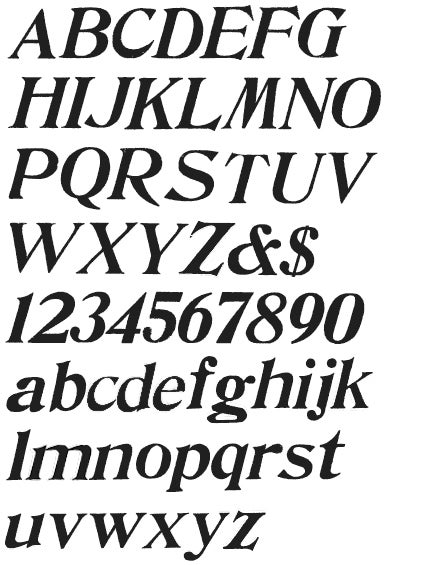DeVinne Italic

This type measures 4 line in size and was produced with the end-cut method. The type block does not have a manufacturer’s stamp.
This face was first shown as wood type by J.E. Hamilton in his 1895 DeVinne Series Wood Type Specimens.
This cut of DeVinne Italic was not shown in either American Wood Type or in the folio.
Type name used by manufacturer:
Hamilton DeVinne Italic or No 632
This is the Hamilton cut.
Hamilton produced a specimen book of DeVinne types on June 1, 1895, stated that the “DeVinne Series is made in wood by permission of the Central Type Foundry of St. Louis, Mo.” The specimen included Regular (No 627), Italic (No 632), Shadowed (No 631), Shadowed Italic (No 633), Condensed (No 634), Shadow Condensed (No 635), Condensed Italic (No 636), Shadow Condensed Italic (No 637), XCondensed (No 638), Shadow XCondensed (No 639), and XXCondensed (No 640).
In American Metal Typefaces of the Twentieth Century, Mac McGrew stated that DeVinne Italic originated as foundry type at the Central Type Foundry, drawn by Nicholas J. Werner and cut by Gustav Schroeder in 1892 and patented in 1893.


